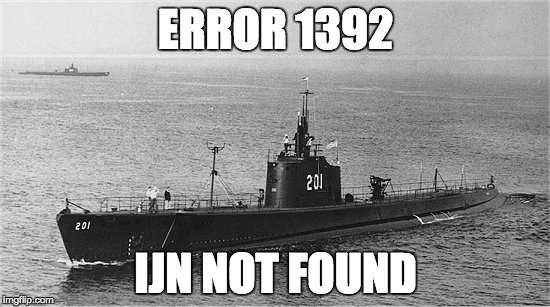I mean, there's also the factor of industrial capability: Japan's ability to replace lost transport ships was far exceeded by the rate that US submarines could sink.
Something interesting to note is that the American naval command apparently did the math, and figured out that Japan could not replace the destroyers it lost in adequate time and numbers. As a result, US submarines tended to be more aggressive against IJN destroyers, furthering damaging Japanese ASW capabilities.
You know that when the enemy is using what your asset is supposed to counter to attack said counter, either the enemy is incredibly bold (and/or stupid) or you are doing something incredibly wrong. In the case of the Pacific theater, that turned out to be the latter.
Even though US submarines mainly targeted supply ships, transports and the like, they still wrecked havoc on actual warships, as much as or even more so than the Japanese submarines despite their famous successes like Yorktown, Wasp, and Juneau. In addition to the aforementioned destroyers, US submarines also killed several cruisers (Atago, Maya, Tama, and Isuzu), carriers (Shoukaku, Unryuu, Taihou, Shinano (Japan's pitiful damage control abilities came into play on the latter two)), and even the battleship Kongou, a feat the IJN never managed.
This is, of course, not even mentioning US submarine radar, which gave them the ability to hunt and sink Japanese submarines (which they did). Japan was pretty much unaware of this ability, and oftentimes misattributed submarines lost in this way to aircraft. The British, despite having to deal with radar-wielding U-boats, also conducted attacks like these, and did manage to sink a number of U-boats with their own submarines.
Given these factors, it's no wonder some say the submarine service cut down the war's time by six months. Working torpedos at the start of the war may cut down the war's time by another 6 months, or maybe even a year.

(If you're wondering, the number 1392 refers to the number of ships US submarines sank during the war)
Something interesting to note is that the American naval command apparently did the math, and figured out that Japan could not replace the destroyers it lost in adequate time and numbers. As a result, US submarines tended to be more aggressive against IJN destroyers, furthering damaging Japanese ASW capabilities.
You know that when the enemy is using what your asset is supposed to counter to attack said counter, either the enemy is incredibly bold (and/or stupid) or you are doing something incredibly wrong. In the case of the Pacific theater, that turned out to be the latter.
Even though US submarines mainly targeted supply ships, transports and the like, they still wrecked havoc on actual warships, as much as or even more so than the Japanese submarines despite their famous successes like Yorktown, Wasp, and Juneau. In addition to the aforementioned destroyers, US submarines also killed several cruisers (Atago, Maya, Tama, and Isuzu), carriers (Shoukaku, Unryuu, Taihou, Shinano (Japan's pitiful damage control abilities came into play on the latter two)), and even the battleship Kongou, a feat the IJN never managed.
This is, of course, not even mentioning US submarine radar, which gave them the ability to hunt and sink Japanese submarines (which they did). Japan was pretty much unaware of this ability, and oftentimes misattributed submarines lost in this way to aircraft. The British, despite having to deal with radar-wielding U-boats, also conducted attacks like these, and did manage to sink a number of U-boats with their own submarines.
Given these factors, it's no wonder some say the submarine service cut down the war's time by six months. Working torpedos at the start of the war may cut down the war's time by another 6 months, or maybe even a year.

(If you're wondering, the number 1392 refers to the number of ships US submarines sank during the war)
Last edited: